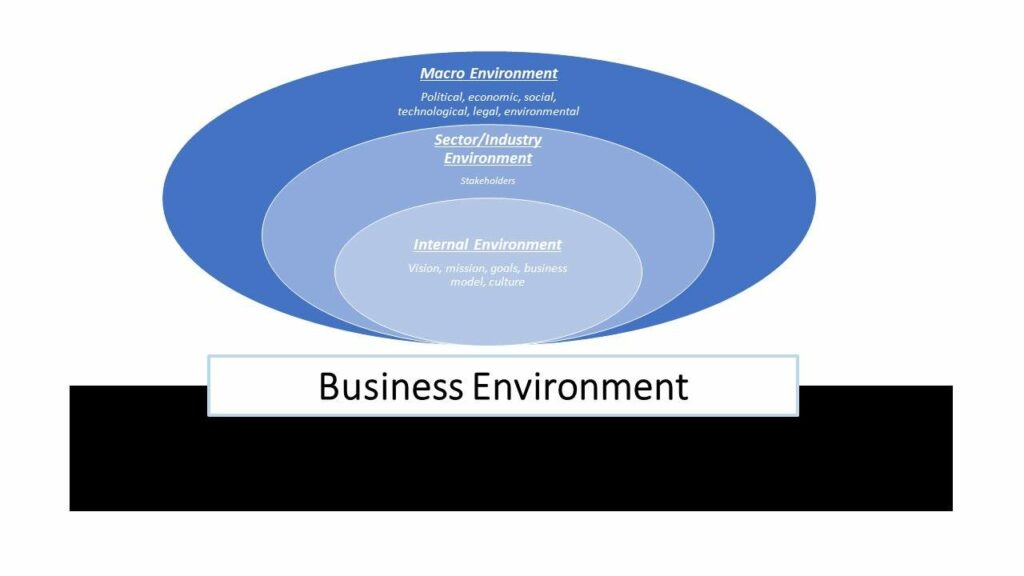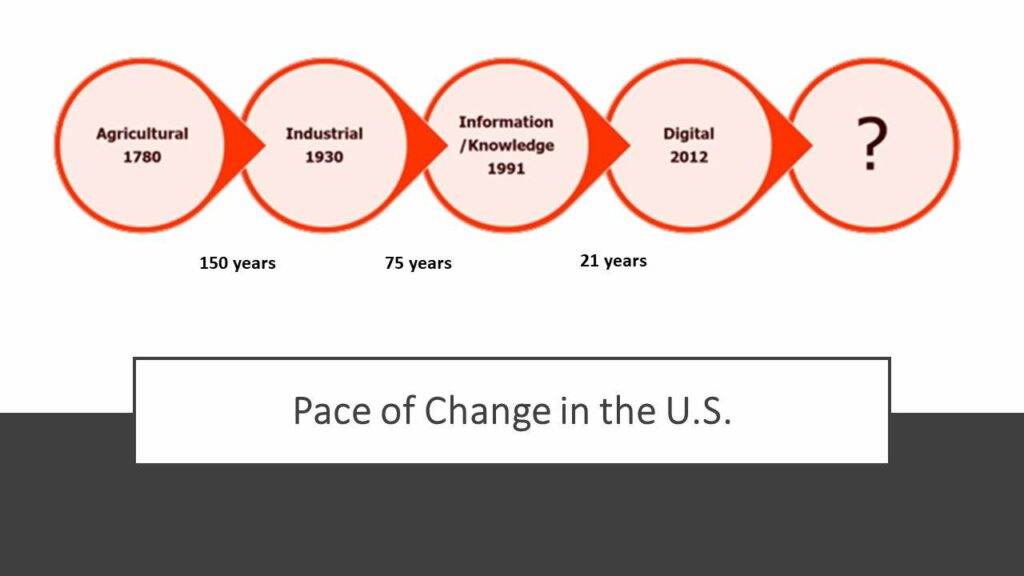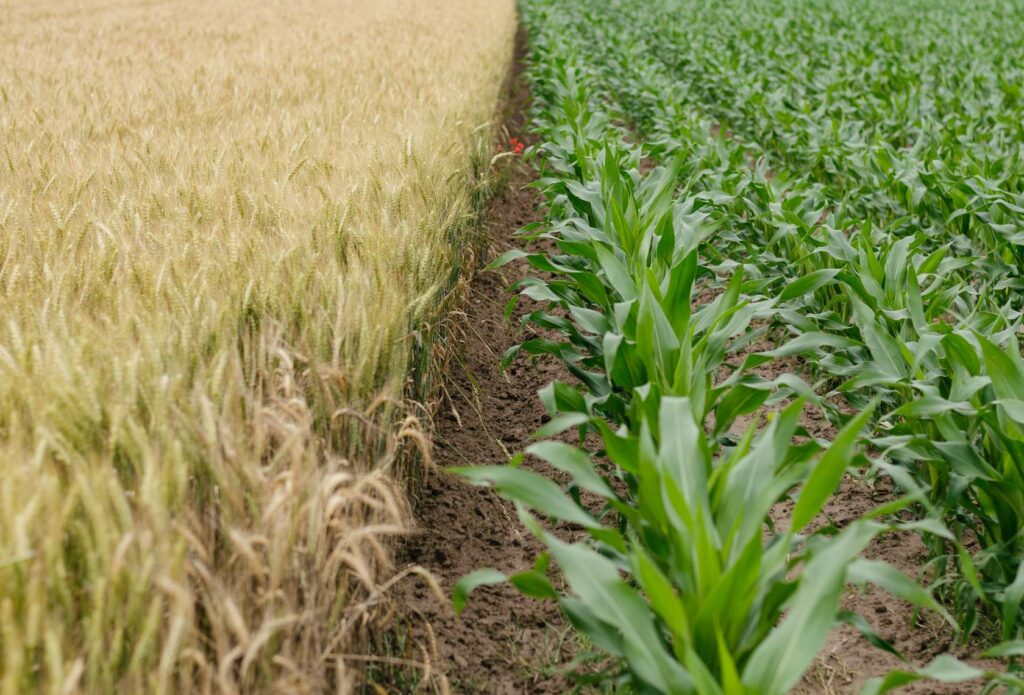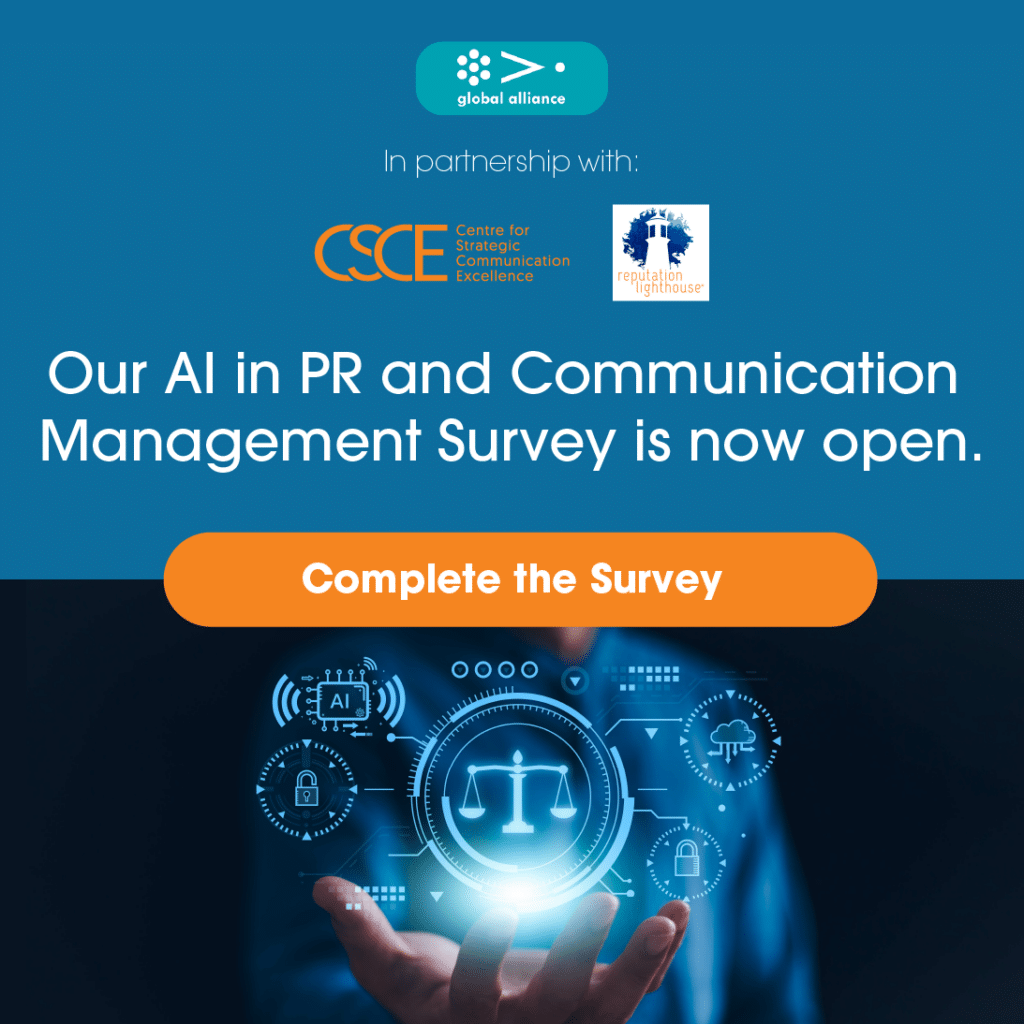Chapter 1 – A Global View
When the winds of change blow,
Chinese Proverb
some build walls while others build windmills.
The Business Environment
Businesses operate in the context of the times in which they operate, their location and the needs and wants of the people living at the time. While that sounds relatively simple, having a grasp on these areas is crucial to a business’s ability to perform successfully and contribute to society as a business citizen. Think of it this way… the business environment is very similar to a stage in a theatre where players come together to perform a play. The size of the stage, who is on the stage and what happens on the stage, impacts the story told.

Alignment with the Global Standard
As communication professionals, we know context as one of the principles of the Global Standard of the Communication Profession. Referring to Figure 1 below, we see the business context includes three areas to understand.
We must understand:
- the organization’s external environment — the political, economic, social, technological, legal and environmental (PESTLE) factors,
- the industry environment — its stakeholders such as customers, regulators, suppliers, and competitors, as well as
- the internal environment — its vision, goals, culture and how operations work together to achieve the organization’s mission

Globally, Industrial Revolutions Herald Disruptive Change
Economics is the study of how a society uses its limited resources in the production, distribution and consumption of products and services. Businesses and consumers have a unique relationship in economics. Businesses have an essential role as they produce and distribute products and services while consumers hold the responsibility to buy and use those products and services. But what drives economies?
Industrial Revolutions are major global events that happen due to changes in the way businesses produce and distribute, and consumers consume products and services. These global events impact how limited resources are used with the responsibility of consumers to use them wisely. The advent of a fourth industrial revolution is underway and will change the current economic relationships dramatically. Let’s look at changes seen when industrial revolutions occur and the current industrial revolution that is upon us.
Industrial revolutions, as global events, drive the economies in countries by impacting what business work occurs, the value of different work and, how and where workers do their work. For example, since the First Industrial Revolution (1IR) in the 1700’s, the U.S. has evolved from an agricultural economy where agricultural production was highly valued, to a digital economy in the early 2000’s where digital and technological competencies have become highly valued. (Fig. 2) How does a shift in economic focus impact business and people? By drilling down into the economic legacy of the U.S., we can see how this trickle-down impact affects businesses and people.


Agricultural Economy

Industrial Economy
Economic Legacy in the U.S.
In the agricultural economy, which lasted about 150 years, work occurred mostly on farms and measured the farm production taking place. Farmers worked independently with little oversight or management. They had to know when to plant, when to water and when to harvest their products. Work often began shortly after sunrise and stopped around sundown. The knowledge of how to do work was passed down from one farmer to another, very often to a younger family member. Ownership of the farm usually resided within the family as well. The location of the farm, what was planted and harvested and how farmers were able to bring what they grew to a marketplace drove the wealth of a farm Farmers were reasonably self-sufficient. You can imagine that as farmers became more knowledgeable about farming and trying new things to pass along to the next generation, the farm itself became a source of economic wealth and stability.
By 1930, the U.S. had transitioned into the industrial economy where the work valued occurred in factories and industrial plants in geographic hubs — cities. In cities, businesses had access to the raw materials needed to manufacture products as well as workers looking for work. This migration to cities to become a part of the mass production of products is called urbanization. The factories and plants hired workers without the knowledge to do the work. Learning how to do the work was demonstrated and learned when hired. Workers simply had to follow what they had been told in order to stay employed. A workday often centered around shift work with profitable companies running three eight-hour shifts in a 24-hour day. Most workers worked one shift. The work environment itself became more interdependent with work in one area dependent on work completed in another area, inside the factory or plant building. Workflow communication alerted workers to what was coming down the line. Ownership of the factories and plants rested with owners who often started the business, so they knew the products made and sold. Production of products became the driver of economic growth rather than the farming activities seen in the agricultural economy.

Information/Knowledge Economy

Digital Economy
Today’s U.S. Economic Environment
Within 75-80 years, the U.S. economy was being driven by knowledge and information as economic growth moved from product production into the delivery of services that required specialized knowledge to understand and perform. (Fig. 2) By 1991, the U.S. was deriving more of its economic wealth from companies in service industries than manufacturing/industrial sectors. The need for higher education to perform the work in the knowledge/information economy delayed entry into the workforce by two-fourur years. Workers entered the workforce in their early to mid-twenties compared to the industrial economy workers who came from high school, many leaving high school before they even graduated. Knowledge/information work occurred in office buildings with environmental temperatures controlled and work areas designed for the comfort of employees. Work started around eight in the morning, with the majority of employees home for dinner. Working well and communicating with other areas in the company, both in leading and supporting activities, was crucial to the success of individuals as well as the companies where they worked. Businesses were led by people who knew how to manage companies but may not have expertise in what the company actually delivered to the marketplace. Despite the additional education, employees often learned the intricacies of a business when they became employed, using their education to enable them to learn more efficiently and effectively once employed.
The advent of web technologies and the Internet in the latter part of the twentieth century created the digital economy. The digital economy continues its focus on knowledge/information work. The use of digital technologies dramatically improves the speed, scope and quality of knowledge/information work. Work is far more efficient and effective than the knowledge/information economy. The digital economy is worth about three trillion dollars today with its value accumulating in just the last twenty years — the fastest accumulation of economic wealth in history. Preparation for work in the digital economy relies heavily on academic experiences that include internships and real-life applications in project and assignment work. Soft skills such as listening, adaptability, communication and leading without authority are as important, if not more important, as workers manage their workload towards success rather than relying on structural authority within the company. Work can occur anywhere and anytime as long as someone connects to the Internet. Devices abound to conduct work, with employees using laptops, tablets, smartphones and smartwatches. Work takes place 24/7 as the global marketplace provides economic opportunities across local, regional, national and international markets from the comfort of your office or home. The use of digital technology is often learned from both business and personal activities with Internet access in the U.S. at 96% of the population, enabling on-demand learning at the click of a button. Just as learning blended from business and personal activities, so too are the lines of communication. Communication, so finely delineated between work and personal in the knowledge/information economy, now is interspersed throughout a person’s day, with individuals challenged with balancing what work requirements and workers own social well-being needs.
As we look at the expectations of the worker in the digital economy, does it sound somewhat like the worker in the agricultural economy? It should. Today’s business environment requires workers to be relatively self-sufficient and self-starters in innovation that improve the way they work and enhances the quality of work produced.

Pace of Change is Constant
As we look at the impact of industrial revolutions in driving what was and is valued work in the U.S. economy through the centuries, it is essential to note the time to acclimate to change has gotten shorter as well. It took roughly 150 years to move from an agricultural economy to the industrial economy, almost two generations. People had time to identify, learn and adjust to the “new” world. Some people may have spent their lives in just one economic cycle. We have workers today who could have possibly started working in the industrial economy, transitioned to the information/knowledge economy and now find, as they come towards the end of their professional lives, must adopt a workstyle appropriate for the digital economy.
The accelerated pace of change requires people to understand the shift in what work is valued, learn and adopt work that is now valued and be prepared to do it over and over in their lifetime. The accelerated pace of change impacts the entire business environment and all workers. As communication professionals, our understanding of this constantly changing business environment is crucial to the way we work and what businesses value.

Change is constant.

Change involves trial and error.

Change is doable.


